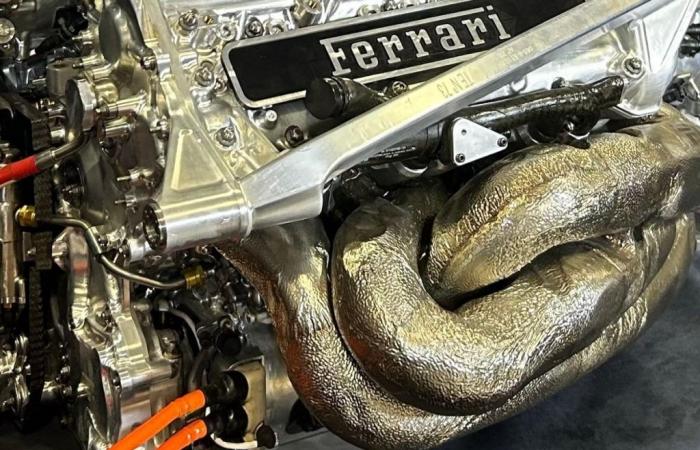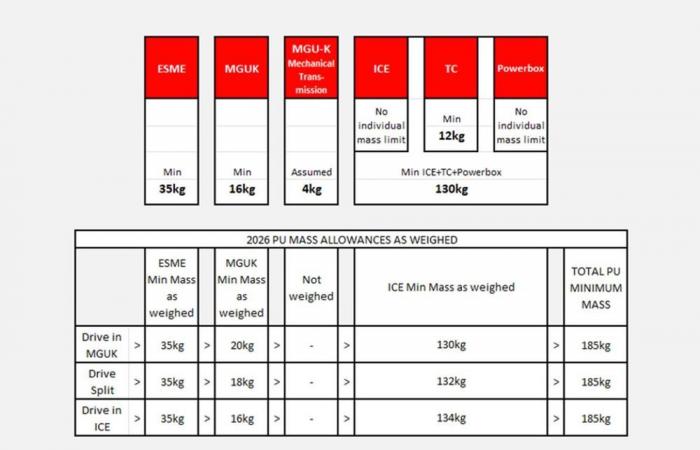Little has been said about it so far, but this topic is very interesting: the power units of 2026 will have an important novelty. For security reasons, andl MGU-K can no longer be housed on the right side of the combustion enginebut it must necessarily be within a special section of the chassis.
The reason? It’s very simple: The electric motor operates with high voltage, so it must be insulated to avoid possible current leakage.
This is the current MGU-K that Mercedes mounts
Photo by: Mercedes AMG
Compared to the current 120 kW, the MGU-K will have an electrical power of 350 kW, that is, almost triple what we are used to today. The new motor-generator will have a minimum weight of 16 kg and, at most, will be able to operate at a speed of 60,000 rpm, while the current one cannot exceed 50,000 rpm and offers a maximum of 163 HP.
While Ferrari uses a complicated gear system on the 066/12 to couple the crankshaft to the MGU-K, in 2026 a specially designed transmission system will be needed because the 6-cylinder will rotate at a maximum of 11,000 rpm when changing gears.
And that will be one of the important technical questions in the search for reliability: it seems that engine designers are coming up with very different solutions because power bank failures are frequent in this experimental phase.
FIA graphic
Photo by: Franco Nugnes
The builders are also working to see where to put the transmission, which will have its own clutch: this unprecedented “gearbox” can be mounted next to the MGU-K, in its chassis recess, but then the power unit will have a weight increase of 4 kg. Another option is to place it next to the 6-cylinder crankcase and in this case it will be the ICE, with a minimum weight of 130 kg, to which the 4 kg should be added. There is also a third possibility: if the transmission is in the center, the 4 kg will be distributed half to the MGU-K and half to the 6-cylinder.
If manufacturers are looking for the best location for the power unit to be most efficient (the torque divider will also need a cooling system!), chassis builders will be looking at the extent to which transmission displacement will affect weight distribution, turning this into a purely automotive issue that will also affect the car’s hardware.
Any change in the regulations could have important effects on the design of future cars. The simulations that the teams carried out on the model presented by the FIA in Canada revealed the inability of the cars to achieve adequate performance for Formula 1, suggesting that the current power distribution (50% combustion engine and 50% of the hybrid) should be reviewed in favor of an increase in fuel to prevent the engines from running out of battery at certain times.
And even the fact of reviewing the downforce (the FIA proposal spoke of a 30% reduction in downforce, which seems unrealistic) could have an impact on the aerodynamics and mechanics of the 2026 cars, which perhaps It would turn upside down some of the cornerstones of the projects already initiated by engine manufacturers.
Do you want to read our news before anyone else and for free? Follow us here on our Telegram channel and you won’t miss anything. All the information, at your fingertips!







